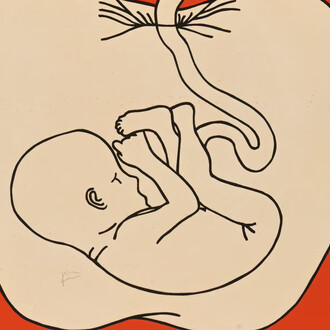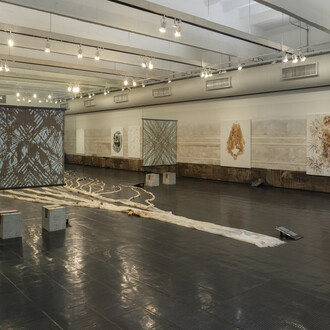Teia à toa presents a cross-section of Barrão's production over the last 20 years, bringing together works in multicolored ceramics, monochrome sculptures in resin, plaster and bronze, watercolors and installations. This is the first time that this body of work has been shown in Curitiba, revealing the complexity and subtleties of his artistic practice.
Over more than four decades, Barrão has developed a language marked by intuition and transformation in the combination of everyday elements - recognizable objects taken from our domestic and urban universe. In his studio, shelves house pieces from different origins - accumulated and organized by criteria that are as intuitive as they are enigmatic. From these fragments come hybrid sculptures that defy functions and styles, always shot through with humor and irony.
The title of the exhibition is also an invitation: a walk through a forest of shapes and colors where everything is connected by invisible threads. Like spiders weaving their webs in the air, Barrão works by combining pre-existing objects and pieces of objects - broken and glued ceramics, objects molded and fused to other materials, pieces of objects organized into improbable compositions. Resin, bronze, china, plaster: each element carries the memory of what was and now presents itself as part of something bigger.
These connections do not follow a utilitarian or rational logic. Like webs that vary according to species and environment - circular, irregular, dense or sparse - the works are organized according to their own system. The sculptures, installations and watercolors are not presented as isolated pieces, but are articulated in space in a network of formal, chromatic and symbolic relationships, activating the visitor's journey as a sensory drift.
There is also a playful and unpredictable dimension that runs throughout the exhibition. " À toa (for nothing)" here is not a lack of direction, but creative freedom. Each work seems to emerge from a game - between materials, between meanings, between titles and forms. The names of the plays, always precise and ironic, work like poems: they sometimes reveal, sometimes shuffle the possible interpretations.
In Teia à toa, Barrão proposes an experience of enchantment and strangeness, in which meaning is constructed through chance, surprise and the gaze of the beholder.
(Text by Luiza Mello. Curator)
















